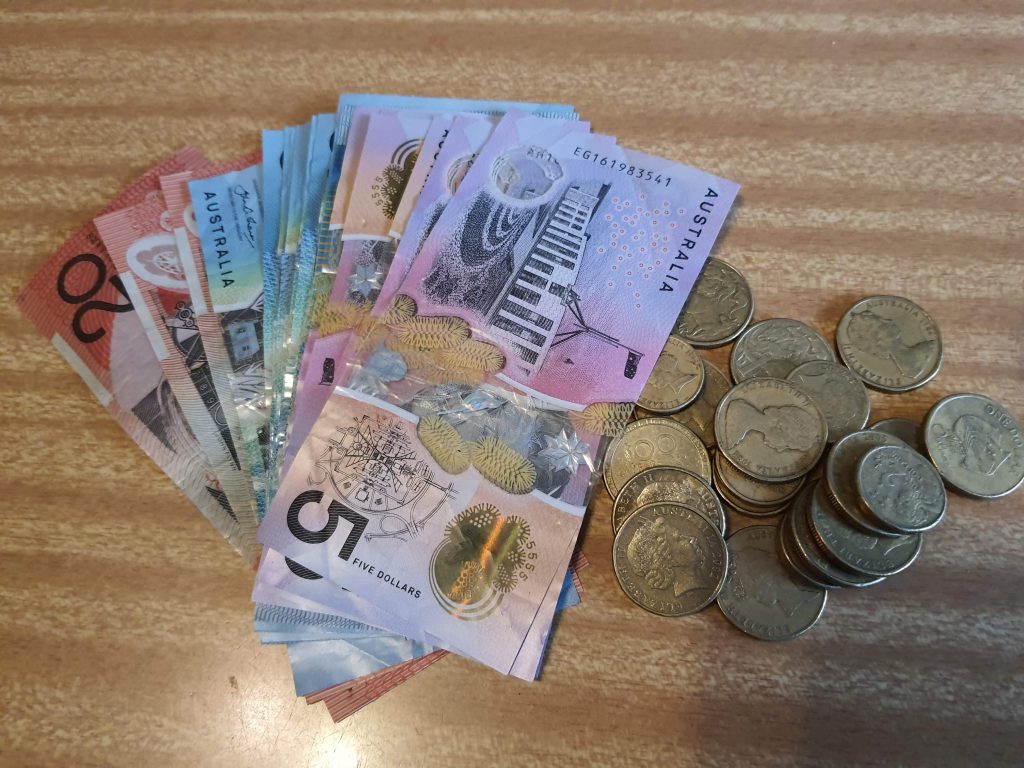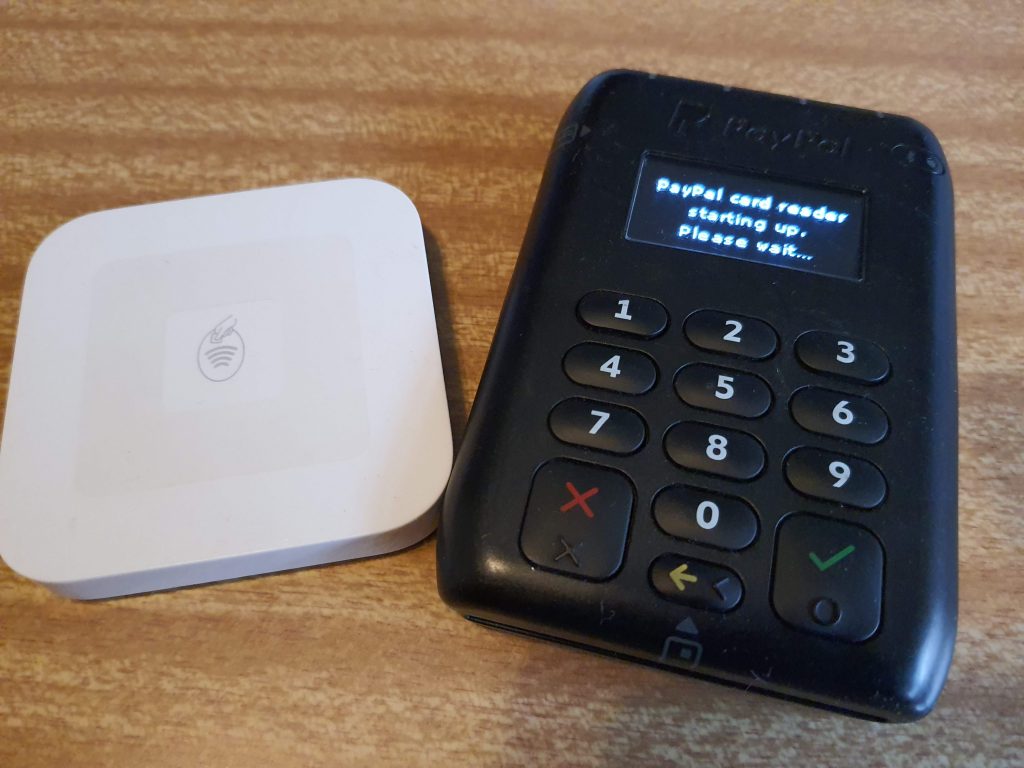Ten Things You Need To Know To Be A Market Trader
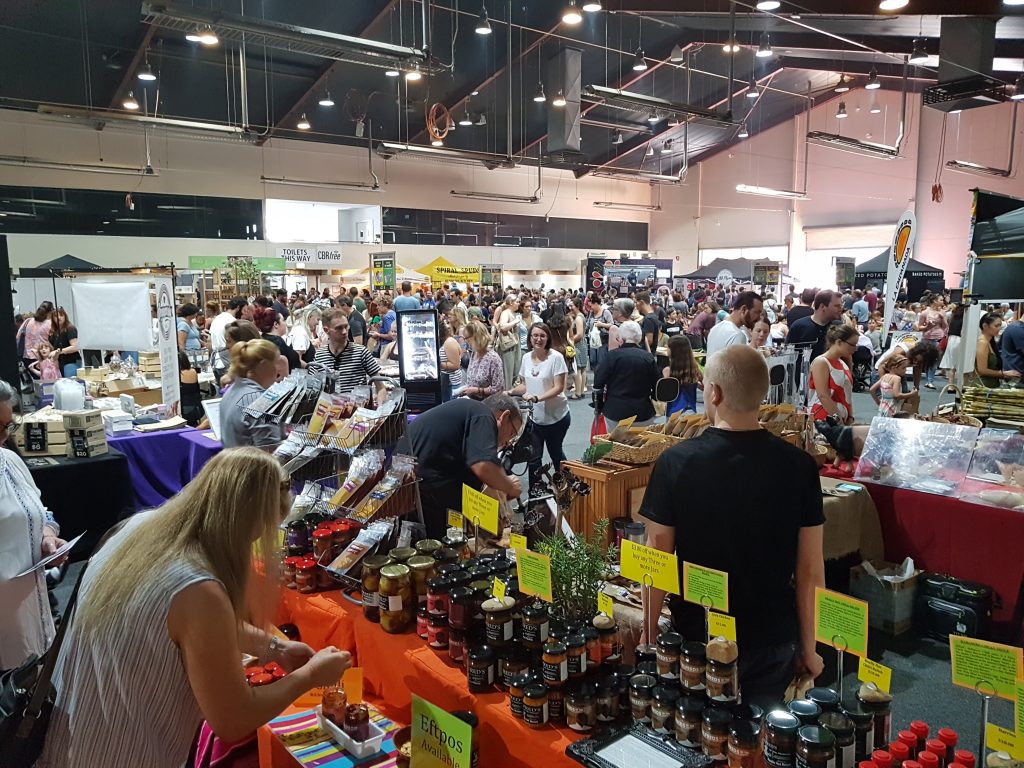
With Covid-19 here for the foreseeable future, there has never been a better time to become a Market Trader. As people change the way they shop and employees find their work situations taking a turn for the worse, we find open-air markets becoming a more popular choice.
People now prefer to shop in the open, out doors in the fresh air and support small businesses. Traders with products that are made locally and in Australia. They prefer to shop at Craft and Farmers Markets where you can meet and talk to the maker or grower.
So if you have something Handmade to sell and you want to join the ranks of producers that are selling at the markets, this guide will help you on your way to becoming a Market Trader. You will need to be prepared and ready to begin trading as soon as markets start to trade again.
Market traders are like one big family. It is a community of people with similar objectives and therefore an understanding of each other’s hard work and skills. Doing what they do well and getting paid for it by happy customers. You look out for each other. Some neighbours even know so much about your stall that they can run it for you when you nip off to the loo or to do some shopping.
Be it making a bit of extra money from your hobby or to replace your usual income, only YOU can decide if the markets are good for you.

- DO YOUR RESEARCH – So we can take it that if you have decided to start selling at the markets you have already got your products in your mind that you want to sell. Be it food, clothes, jewellery or craft. We can take it also that you know how to produce it and you’re good at producing it, whether it be from the job you already do or maybe a hobby. It could be a job you’ve done in the past and you’ve always loved it and you’re revisiting it or it could just be something that has always tickled your fancy and you have decided to do it now. Whatever it is you’ve got to do it well because there’s hundreds of people out there who think they can do it as well as you.

- TEST YOUR PRODUCT AND PRACTISE – Once you’ve decided what your product is going to be, you need to perfect it and get it down pat. Now let’s say for instance and we can use an example of a wooden stool. So let us say that you are making wooden stools because you are very good at carpentry. Your selling point could be in your design. What would make it stand out from all the other ones customers can buy off the shelf. What are its selling points? What is unique about it? Is it because it’s round or is it because it has a square seat? Is it because it folds down? Is it because it’s light or is it because it’s made from special wood; like native timbers?
3. THINGS YOU NEED TO START TRADING – To start selling on the market stall you will need to make a list of all the things that you need. Now if you’re going to start at an outside market you will need a marquee. Most marquees are three by three metres (3m x 3m) as most plots in the markets are three by three metres.
You will need trestle tables to display your products on.
You will need weights to weigh down you’re marquee. Your trestle table will need tablecloths or some form of covering. You will need a sign or banner to let people know what you are selling. These are just the basics. There is much more that you will need to be operational.
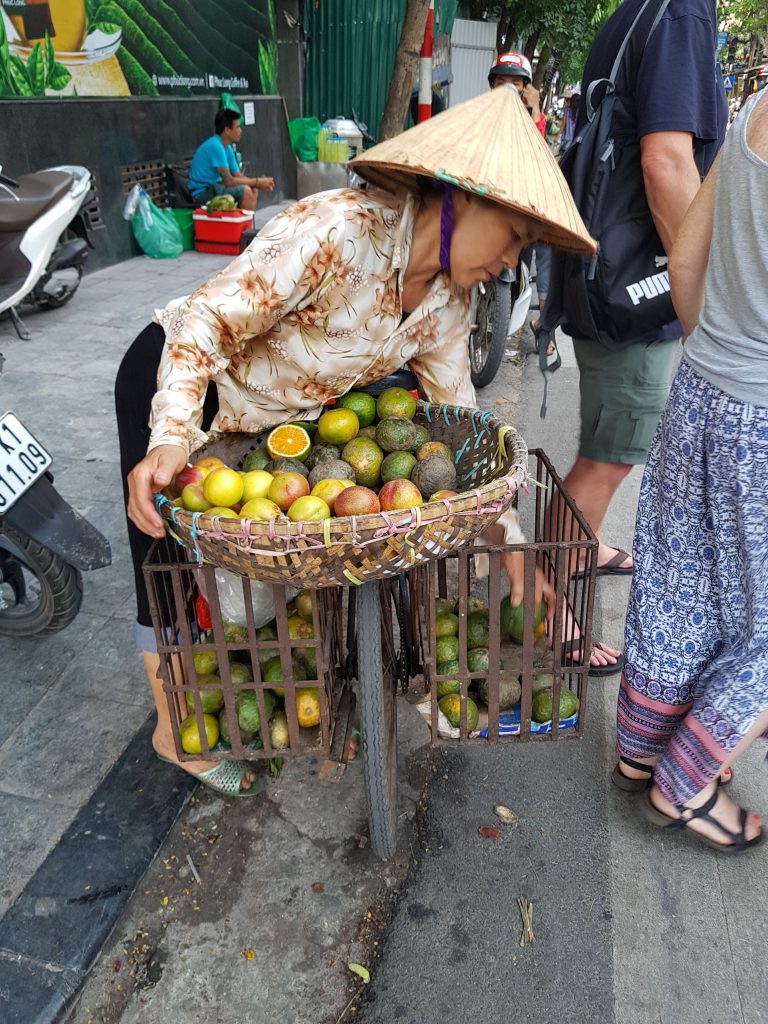
Orange Seller – Vietnam 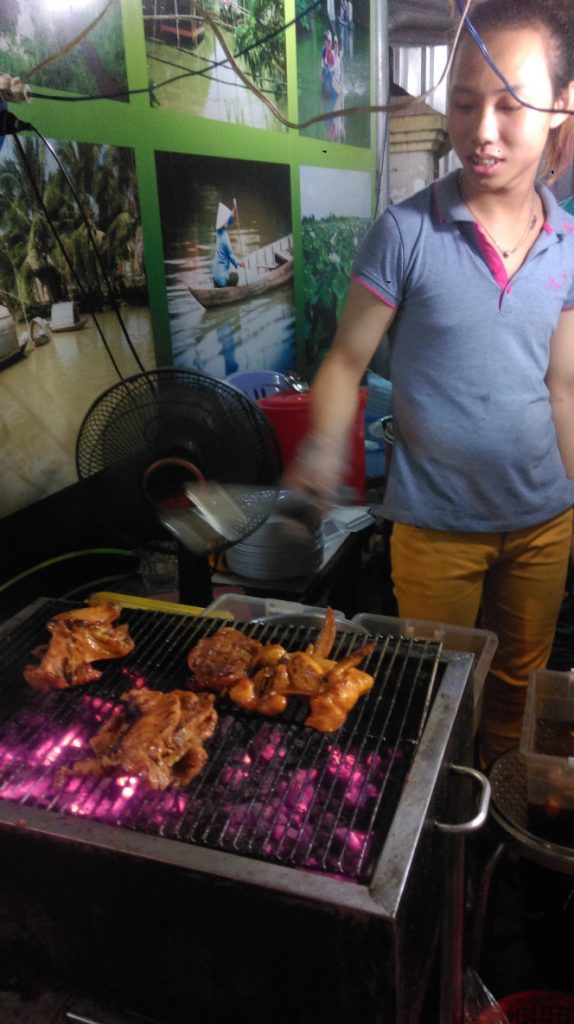
Charcoal Grilled Chicken – Vietnam 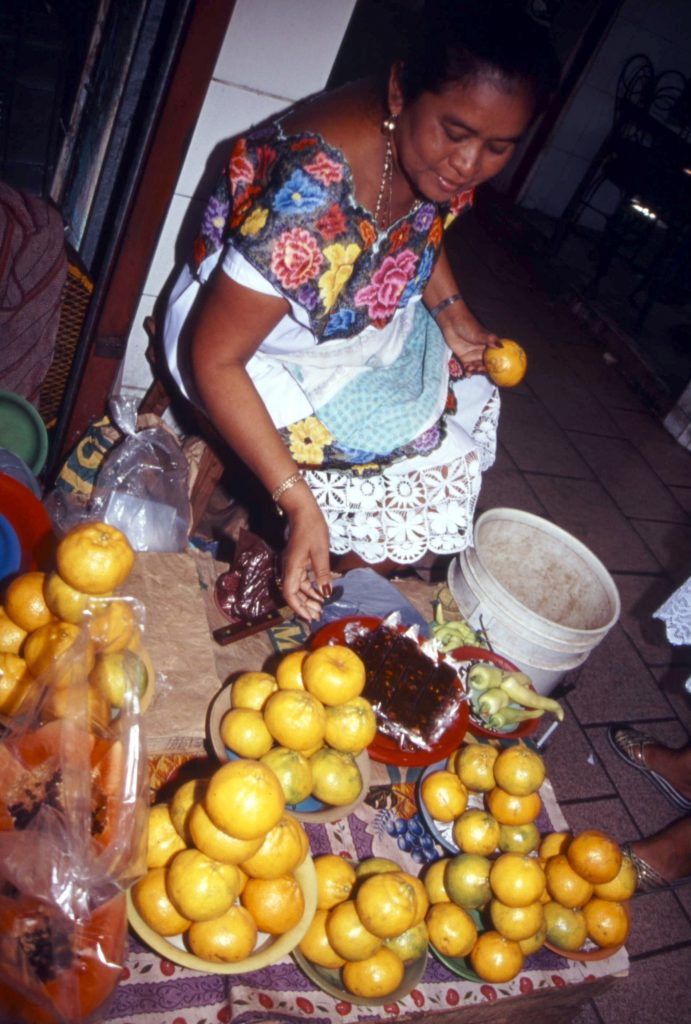
Orange Seller- Merida Mexico
4. RESEARCH – Do your research. Check to see how many other people are actually already selling what you’re about to sell and find out what their prices are. Bear in mind that the prices may differ a lot between traders on Craft Markets. Furniture can be made with different types of wood; clothes can be made with different materials. And of course you have the craftsmanship. This is also the case with food.
5. BOOKING MARKETS – Questions you will be asked range from.
Do you make your products yourself? This is important depending on the type of market. If it is a Craft Market, it will be expected that you make the product from scratch. Basically you are the craft person that created and made the product. Some products can be “value added” such as artwork on a T-Shirt or designs on a piece of furniture.
6. FINANCES – You will need a cash float and also a point of sale machine. Most customers these days will only have plastic cards on them. And they will not be able to pay you cash especially if you are doing a high priced item. You really do not want to see customers walking away if they have decided that they want to buy your product. They will usually say that they will be back but there is more than half a chance that they won’t be back. They may well intend to come back but there are a lot of distractions at markets.
7. BEFORE YOU TRADE – Read the rules and regulations the night before. Makes sure you understand and adhere to them. It is actually best to read them as soon as possible so to make sure you understand them and check if there is anything that you need to do in advance. It could be the difference between being invited back or not. One typical mistake is new traders starting to drive out before the curfew is over. It is the rules in most markets that there should be no vehicular movement until fifteen minutes after the market is scheduled to close.
Check in with your neighbours once you get to your site. Just a “Good Morning” will do it. Don’t forget it is early in the morning and if they have been doing markets for a while they are probably running their set up time as close to being ready for the first customer as possible and will not really want to “chat” for too long before they are organised and ready to trade. This goes for people you bring to help you as well. Be good to your neighbours. They may have some invaluable help for you during the day.
8. CUSTOMER CARE – It is important here to strike the right balance. Don’t be too pushy but don’t ignore them on the other hand. There really is a fine art to it. You can chase people away by not letting them have a look first. If they have stopped at your stall that is half the battle won. I always find it best to have a few simple rules about when customers approached the store
Do not ignore them
Do not eat in front of customers if you can help it.
Do not be overly familiar
Do not have your head stuck in your phone or a newspaper. Some customers see this as the height of rudeness.
Do not get annoyed if they turn around and walk out. They may have come back later after comparing what you’ve got to something else they’ve been looking at. Don’t blow it.
Do not stand with your arms crossed when a customer walks in or when you’re talking to them
Do not talk over your customers.
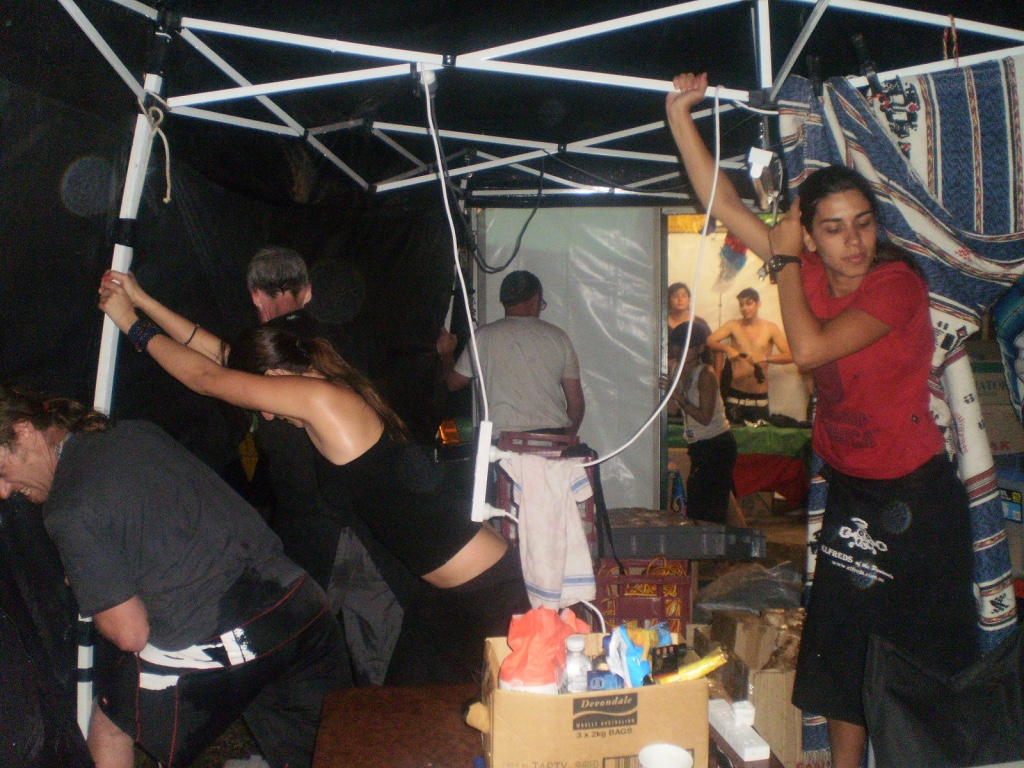
9. THE WEATHER – Now this is something you’re going to be talking about a lot and watching all the time. It will become a constant in your life when you become a regular trader
Too hot, too cold, too windy, too wet.
There are rules with the weather when it comes to extremes. If it’s cold and wet, windy and rainy it is pretty much certain that you’ll be in for a bad market. Having said that it’s not a guarantee you are going to have a bad day. You will find that the ice cream sellers and cold drink sellers will be happy with the hot weather.
And on the other hand you will get a lot of happy coffee sellers or soup sellers on a cold day but mind you they will not have as many customers on the hot days.
10. A BIT ON THE SIDE – There are many other reasons that people have market stalls besides to directly sell their handmade products. Some traders offer a service alongside what they make, some are at the market just advertising or selling a service. Examples of a service to offer is cooking classes or catering along the same lines of what you are selling. If say you have a Food stall selling particularly nice samosas and pakoras, you could offer a catering service for work functions or birthdays.
Markets are a great place to showcase your food to the public for projects that you have not even thought of. You could be a baker that picks up more contracts supplying cafes or restaurants. There are also people that offer services that range from House Maintenance to Dance Classes. I have seen people deck their market marquees rather attractively to advertise and attract new customers. It does not take much to make a marquee look nice.
The same goes for martial art classes. These types of demonstrations can draw a bit of a crowd and if you are currently looking to enroll yourself or your child in a class it can be a good result. A good thing is to offer an introductory discount for new sign ups.
Face painting is a good example of advertising as you earn at the market. Everyone can see your handy work as the little children’s faces are walking billboards for your artwork. A lot of spin-offs can come from this with Children’s Birthday parties, School Fetes and Open Days.
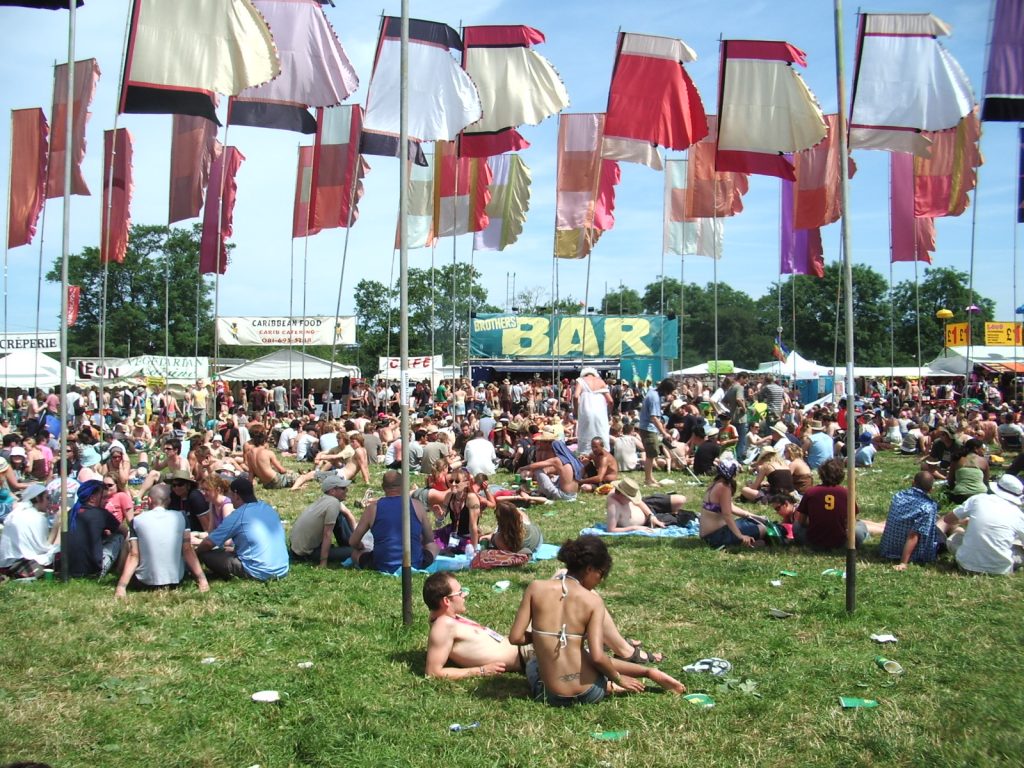
Glastonbury Festival 
Hawkers Centre Singapore 
Festival Food Stall


